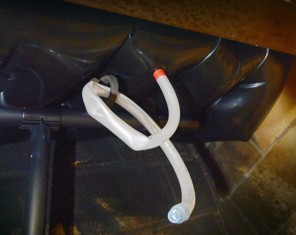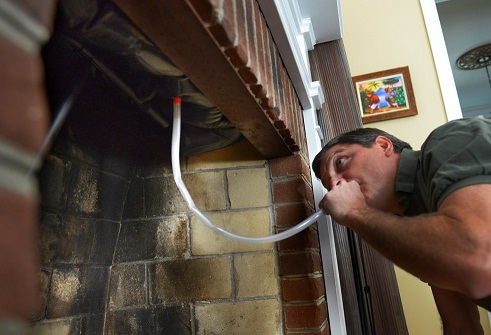From The Washington Post, September 27, 2012
How to winterize your home and cut heating costs The energy bill at John Bristol’s Chevy Chase home fell by $722 over seven months after he installed a pair of $55 chimney fireplace plugs.
By Susan Straight



John Bristol’s 4,500-square-foot, four-level Colonial in Chevy Chase, Md., would have been pricey to heat even without air leaks but the two rooms with wood-burning fireplaces were always cold in winter. He said he believed it was caused by air passing through the chimney flues.
“There just seemed to be a lot of downdraft. Those two rooms were always cold,” he said.
After last winter’s heating bills, Bristol had had enough. In early spring, he was ready to try to minimize air loss in the house. “I started searching around on the Internet and found fireplace plugs,” he said. He purchased them for the two fireplaces and found that they were easy to install. “I put the first plug in the coldest basement family room that was drafty in February 2012, and the second plug in the first-floor living room,” Bristol said. The fireplace plug is a large plastic bag that is inflated to block airflow through a chimney so that air neither escapes from nor enters the interior of the house. The plastic bag, which comes with an inflation tube, is usually installed by partially inflating the bag, placed inside the chimney, and then inflated to fit snugly. Homeowners are advised to leave the inflation tube hanging down into the fireplace so that they remember to deflate the bag and remove the device from the chimney before lighting a fire. For an investment of about $55 per plug, Bristol said he has seen a noticeable improvement — his energy bill dropped by $722 over seven months, or $103 a month. By Bristol’s calculations, he saved 14 to 30 percent ($623) from February to April and as much as 9 percent ($99) May through August. “The average over these seven months [since installation] was 13 percent less consumption” than the previous year, he said. Sweater weather is upon us, with Washington-area temperatures this week plunging into the 40s and 50s, a reminder that winter lurks just around the corner. Will your house be ready to weather the chill? Now is the time to begin assessing the investments you may need to make to ensure that you’ll be warm this winter and experience lower energy costs over time. “The average U.S. household will spend about $990 for winter heating costs this year,” said Allyson Schmutter, spokeswoman for the Alliance to Save Energy. “There’s an incentive to make changes that are easy and realistic,” she said. “There are many simple and energy-efficient fixes that help keep money in your pocketbook while keeping your house comfortable,” she added. Sealing air leaks and improving insulation can save as much as 20 percent on heating bills, for example. Homeowners don’t need to spend a ton of cash to make some very simple improvements, according to Mark Tyrol, owner of Massachusetts-based Battic Door Energy Conservation Products. The key is to find and seal off “overlooked openings,” according to Tyrol. The company’s two top-selling products cost less than $100: an attic stair cover ($99) and fireplace plugs ($54.95).
The company's other popular products include attic fan seal kits ($29.50) and clothes dryer vent seals ($19.50).
|